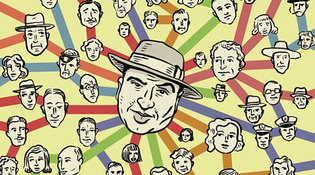 loading
loading
FindingsThe mobster’s guide to networkingAl Capone couldn’t afford too many close friends.  Gregory NemacView full imageAl Capone had few peers—in relationship management. In a new analysis of more than 1,300 people connected to the legendary Chicago mobster, Yale sociologist Andrew V. Papachristos and his former grad student Chris M. Smith, now at the University of California–Davis, used “big data” to show just how Capone’s crime syndicate became organized, persistent, effective, and profitable. “Organized crime is not just about garlic bullets and gangsters in fedora hats,” says Papachristos. “To succeed, Capone had to tap into the right networks.” For this first-of-its-kind study, published in the American Sociological Review, Papachristos and Smith created the Capone Database, developed from records—kept by the Chicago Crime Commission, the FBI, the IRS, and other organizations—on everyone connected to organized crime from 1900 to 1950. They then used statistical tools called exponential random graph models (ERGM) to look for patterns, evidence of multiplexity, a sociological term for “deep and meaningful ties that bind people together in more ways than one,” says Papachristos. The researchers found that multiplexity in three spheres—criminal, personal, and legitimate—turned up only about 10 percent of the time. Multiplexity was critical, Papachristos says, in allowing the enterprise to flourish: “Illicit networks are all about trust. That’s what keeps you out of jail—and from getting killed.” But too many close friends would be costly. “Organized crime is also about making money, and you don’t want too many deep ties because then everyone would want a bigger slice of the pie.”
The comment period has expired.
|
|